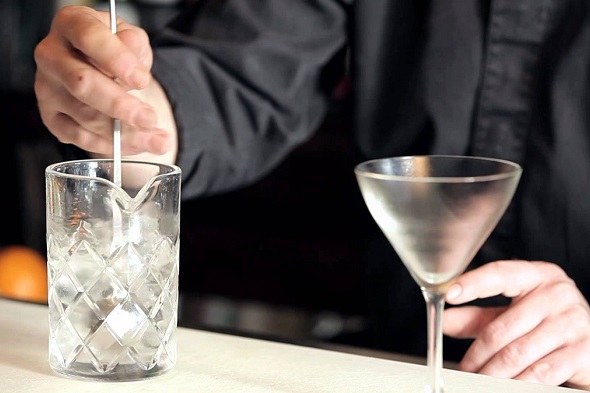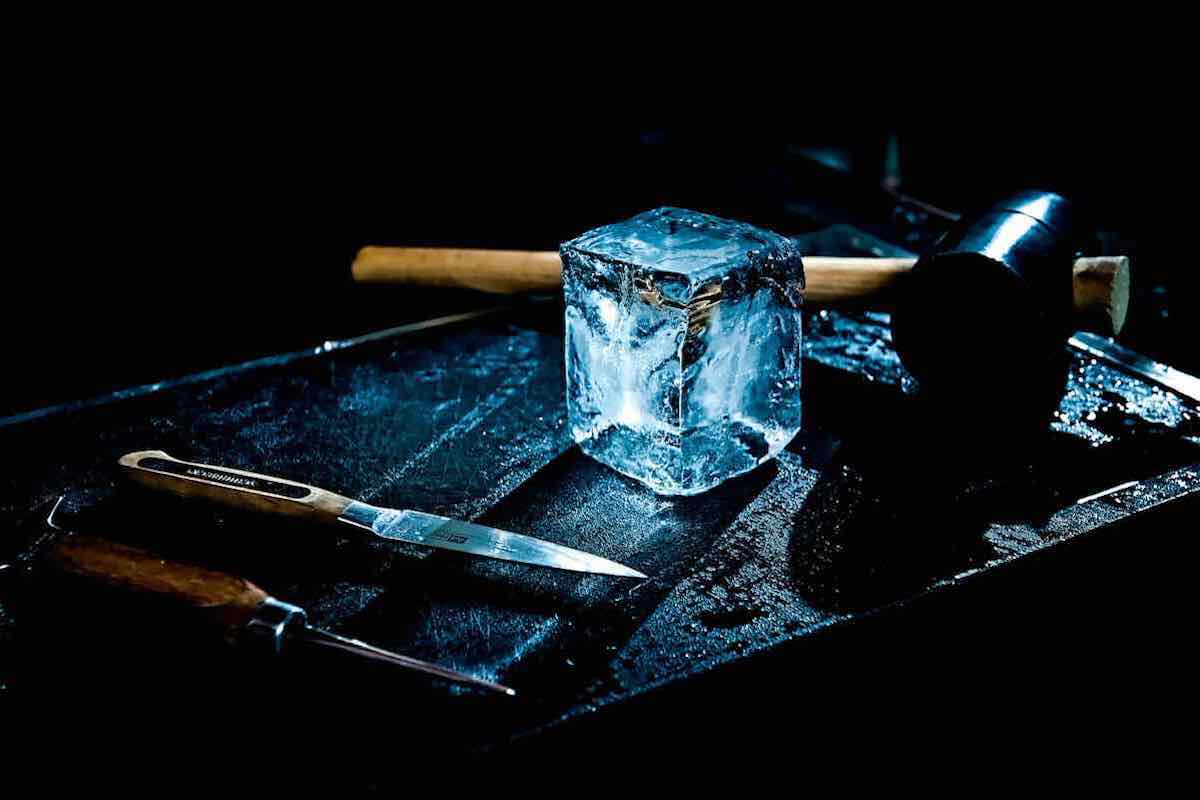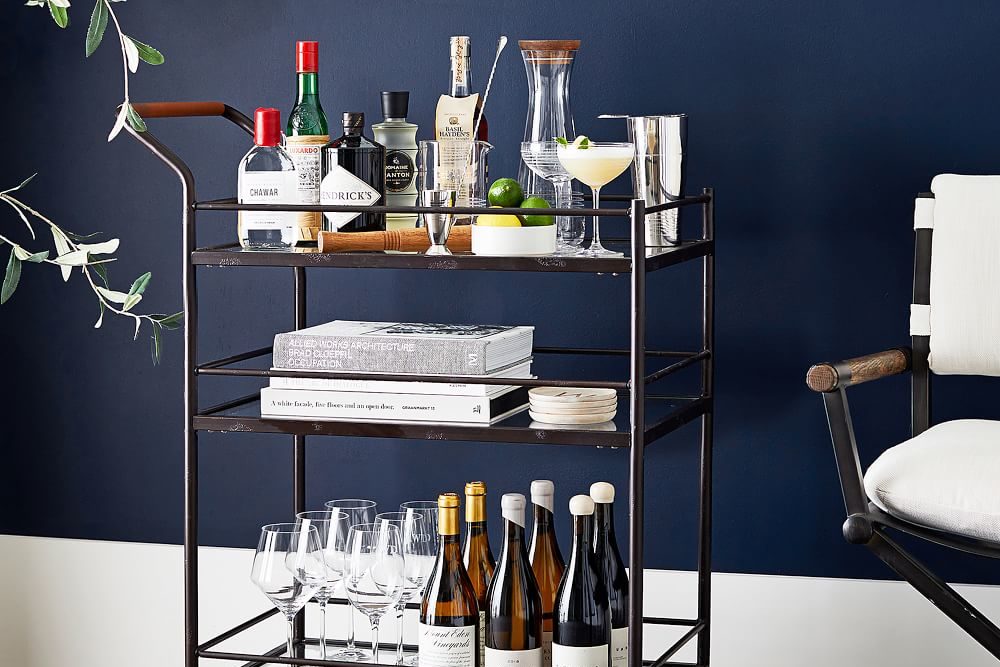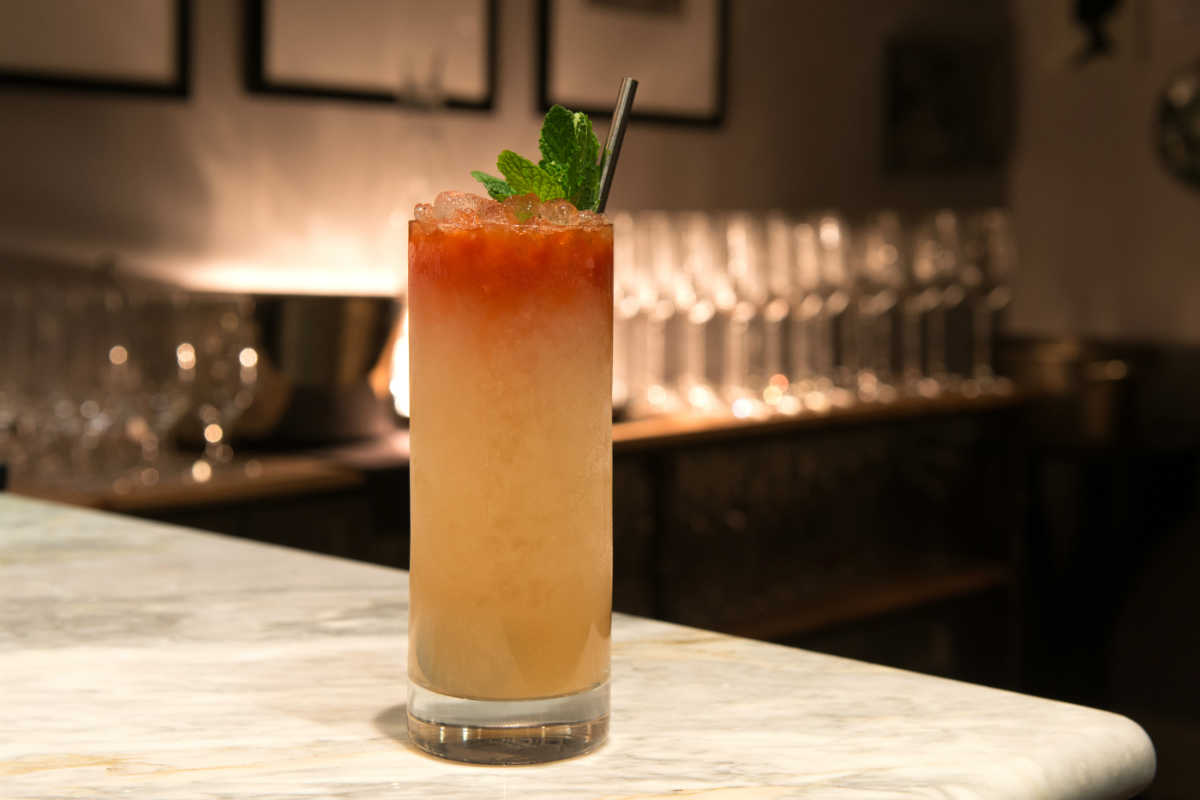Putting together a home bar can be a daunting proposition. It’s easy to be overwhelmed by the sheer number of different gadgets out there, and (sadly) it’s often enough to discourage beginners before they can even make their first drink.
Luckily, once you dive into it, the process of putting together your mixology arsenal is actually pretty straightforward. Despite the fact that there are dozens of models and manufacturers for every tool, they all fall into a few, basic categories.
This guide covers the essential bar tools for your home bar–the jiggers, shakers, mixing glasses, barspoons and strainers–that you’ll need to start cocktailing with the best of ‘em, or to update your existing collection if you’re an old pro.
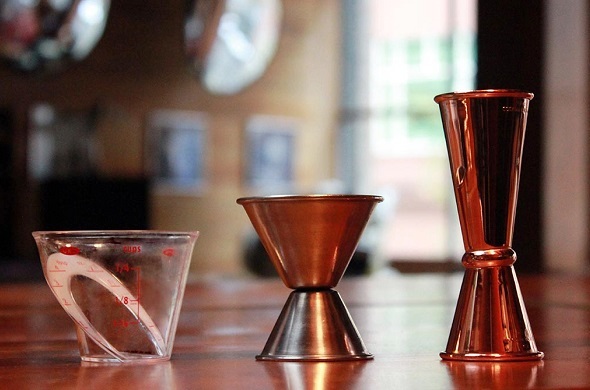
JIGGERS
Once you’ve gotten your hands on a new recipe, the first step is almost always going to be measuring out your ingredients. That’s where the jigger comes in.
These comically-named little guys generally consist of two small cups of different volumes, attached end-to-end in the shape of an hourglass. There are three basic kinds of jiggers to choose from: the standard double jigger, the Japanese-style jigger and the angled measuring jigger. Each one has its benefits, and everyone has a favorite.
The standard double jigger is the old-fashioned, no-nonsense choice that, up until relatively recently, was just about the only game in town. They’re cheap (rarely more than $5), and they get the job done. We recommend getting one with one- and two-ounce cups, like this one from Winco.
A step up from that old standby is the distinctly new-school Japanese-style jigger, which is basically a taller, narrower, sexier version of the original. You’ll see these at craft cocktail bars all over the world, and the biggest benefit (other than aesthetics) is that the narrower opening makes it a bit harder to spill. Our favorites are made by Cocktail Kingdom, which look pretty sleek in either stainless steel or gold.
Finally, there are the angled measuring jiggers, the best of which are made by OXO. These let you get a little more granular with your measurements thanks to their clear markings, and they’re great for general use around the kitchen as well. They come in either plastic or stainless steel for a more refined look.
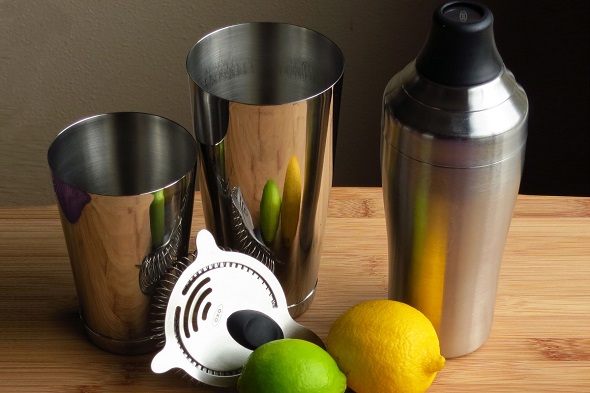
From left to right: Boston shaker, cobbler shaker. Photo: Booze Nerds
SHAKERS
Next, of course, you need something to put those perfectly-measured ingredients in. Depending on what you’re making, that’s either going to be a cocktail shaker or a mixing glass.
Without getting too deep in the weeds about the chemistry behind it, there’s a simple rule: drinks that only use boozy ingredients (spirits, liqueurs, bitters and the like) should be stirred, and drinks with citrus or other juices should be shaken—cocktails like the Daiquiri, Margarita, and Whiskey Sour benefit from the extra bit of dilution and frothiness it gives them.
There are two standard types of cocktail shakers: the Boston shaker and the cobbler shaker. Boston shakers consist of a metal tin that you fit together with either a pint glass or a smaller metal tin, and they’re about as simple and reliable as can be. There’s not much variation in the products out there, so we suggest going with a simple weighted steel tin that’ll run you less than $7.
Cobbler shakers, on the other hand, are the archetypal shakers you see in movies. They come in three parts–a tin, an internal strainer, and a nozzle with a cap. And despite looking great they can be a serious pain to use. Cheap models have a tendency to get stuck shut, so instead of pouring your drink you end up spending five minutes just trying to wrench the thing open. If you absolutely have to have one, though, the Usagi cobbler shaker from Cocktail Kingdom is probably the best one on the market.
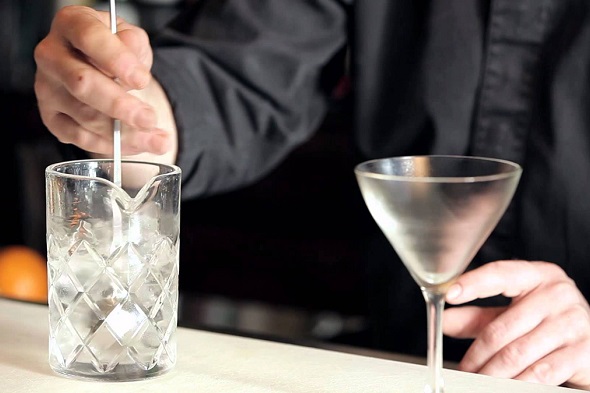
MIXING GLASSES
Now, if you’re going to be making a spirits-only drink like a Manhattan, Martini, or Old-Fashioned, you’ll need to stir it in a mixing glass. Spirits mix more easily with each other than they do with juices, so there’s no need to shake, and you want to avoid diluting them too much anyway.
Mixing glasses are pretty straightforward pieces of equipment, and some people don’t even bother with them, opting to use a pint glass instead. We tend to like the ones that are made specifically for cocktails, though, as their shapes and sizes are perfectly optimized for stirring with a barspoon.
The main considerations when purchasing a mixing glass are size and sturdiness, and when it comes to those nothing can really beat the Yarai mixing glass from (you guessed it) Cocktail Kingdom. It’s the perfect volume for one or two drinks, and the thick glass can stand up to a lot of abuse. Plus, it’s damn good looking.
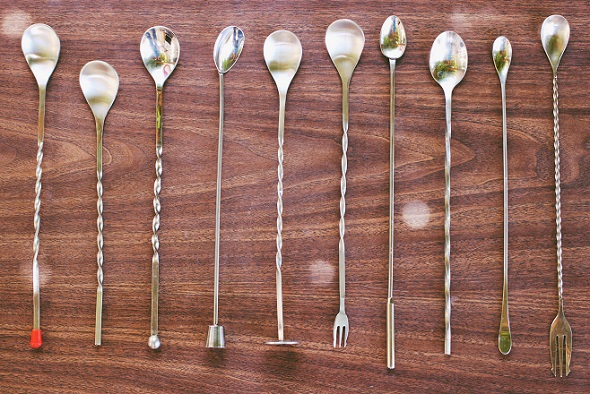
Photo: Simple Cocktails
BARSPOONS
Next, you’re going to need a proper barspoon to actually stir your cocktail. Essentially, barspoons are just long, thin spoons that have a smooth, spiral coil along the handle, which allows the spoon to rotate freely in your hand as it makes its way around the glass.
This is a category where there are some pretty awful products, so be careful when you’re shopping online. A good rule of thumb is to avoid anything with a red plastic cap on the end of the spoon, because despite being iconic and ubiquitous those are almost always cheaply made and uncomfortable to hold.
There are a lot of excellent ones out there, though, and a solid daily driver is the 12-inch stainless steel barspoon from Hiware. We use it all the time, and at just under $8 you can’t beat the price.
More premium options, like this 20-inch copper-plated trident barspoon from Cocktail Kingdom (yes, it literally has a trident on the end for spearing garnishes and generally looking awesome), are quite a bit pricier. That said, they’re excellent quality and an attractive addition to your home bar.
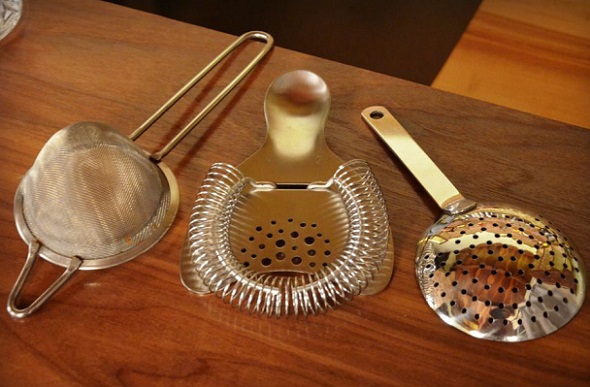
From left to right: fine mesh, Hawthorne and julep strainers. Photo: ABarAbove
STRAINERS
Finally, you’re going to need to get your hands on a few cocktail strainers so you can transfer the drink into your glass. Depending on whether you used a shaker or a mixing glass, you’ll have to decide on some combination of Hawthorne strainer, julep strainer and mesh strainer.
Hawthorne strainers are the most common variety, and are typically used any time you shake a cocktail. The spring around the edge lets you adjust the size of the opening, so you can control how much stuff (muddled fruit, ice shards, etc.) ends up in the final product. OXO makes a fantastic Hawthorne strainer with an ergonomic finger rest that we can’t recommend enough.
When you want to ensure that your cocktail is more finely filtered, you can pair a Hawthorne strainer with a conical mesh strainer in a technique called double straining. You simply hold the mesh strainer over the serving glass with one hand, and strain the drink through it with the other. This cheap mesh strainer by RSVP is our personal favorite.
For stirred drinks, you almost always want to use a julep strainer. These look like large slotted spoons and fit over the top of the ice at an angle. As usual, Cocktail Kingdom has one of the best on the market, and it’s sturdy enough that it might just outlive you.
With these bar tools, you should have no problem getting your home bar up and running. Each and every one of them has served us well over the years, and they’ll cover your needs for the vast majority of cocktails, whether classic or contemporary. So get out there, get kitted up and get mixing.
Will Shenton is the Content & Community Manager at Bevvy and an incorrigible cocktail geek.
